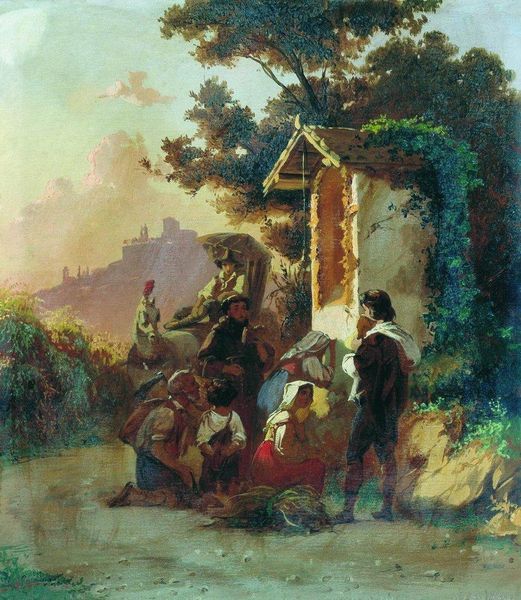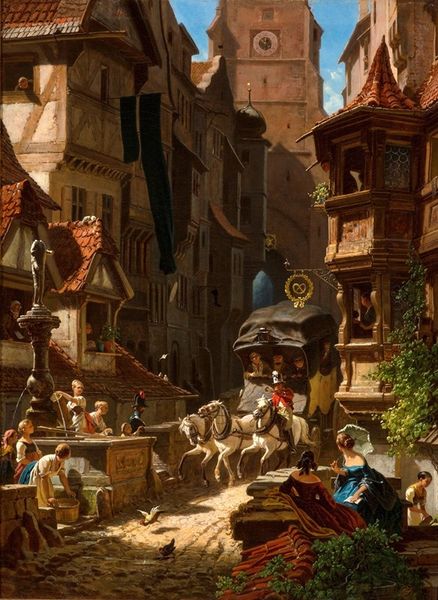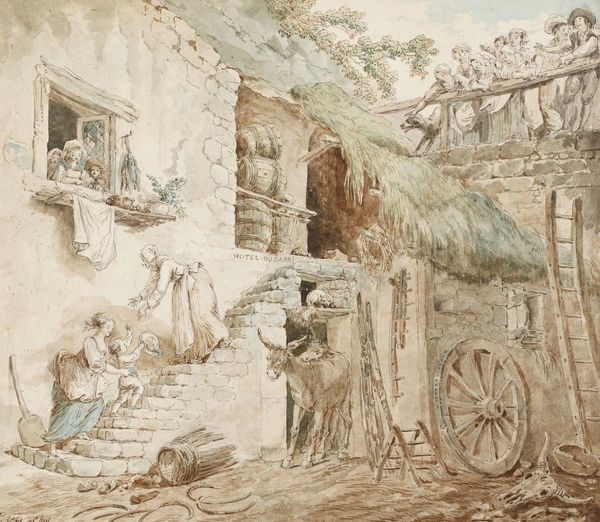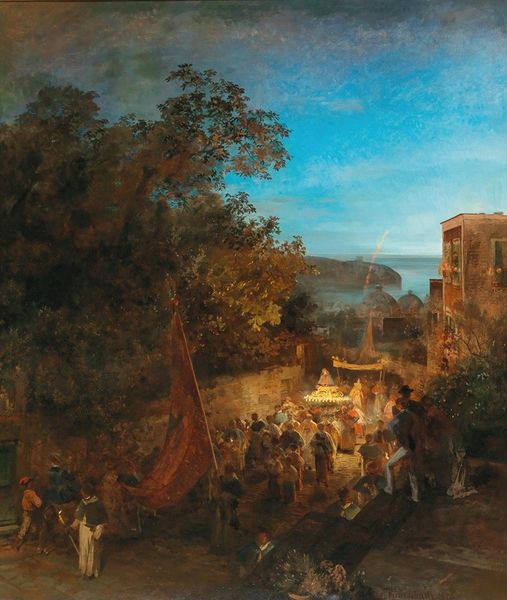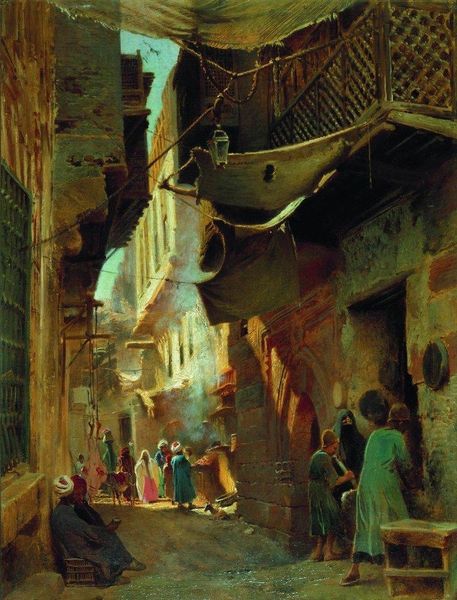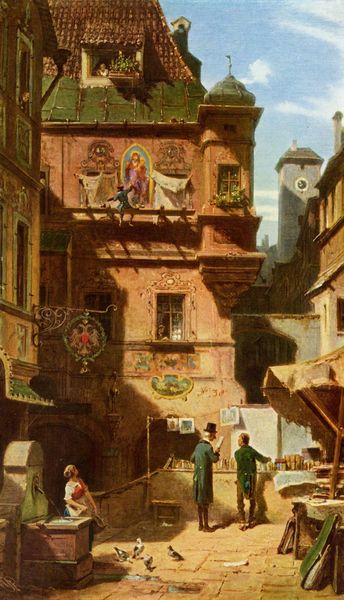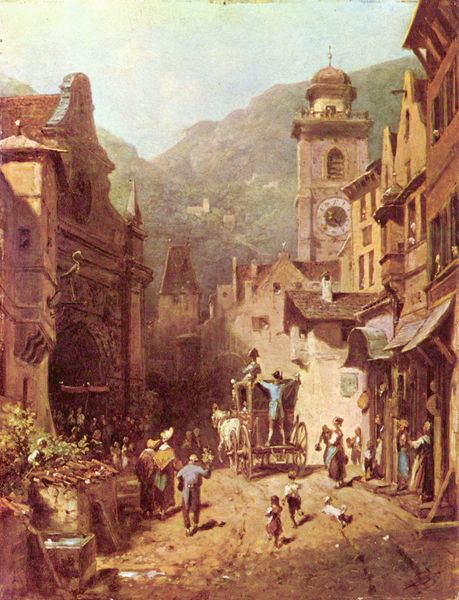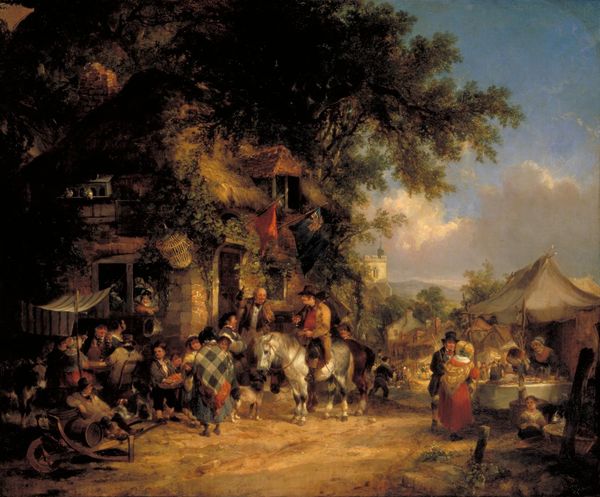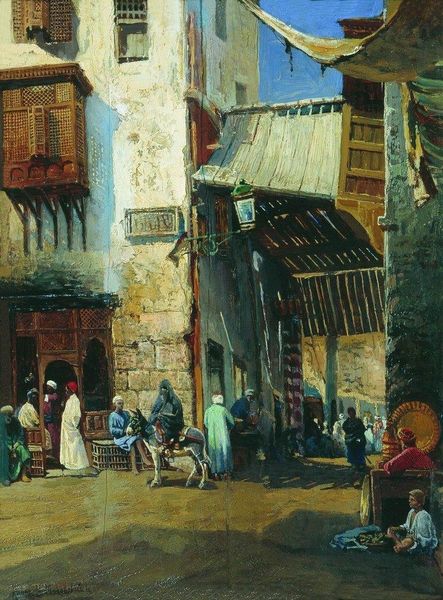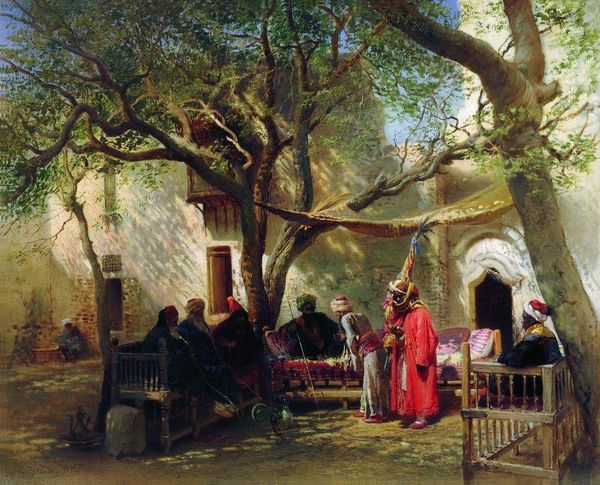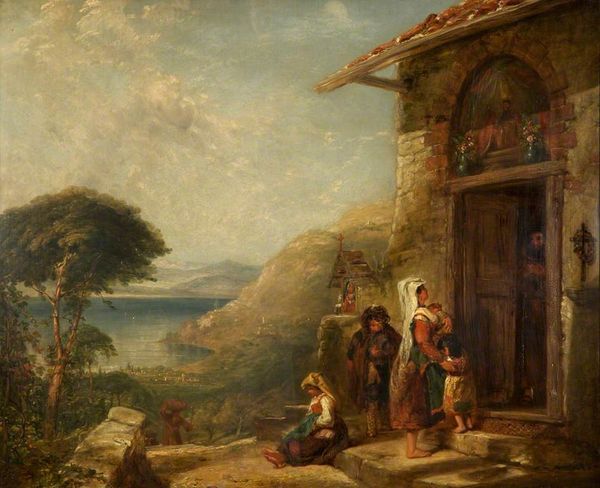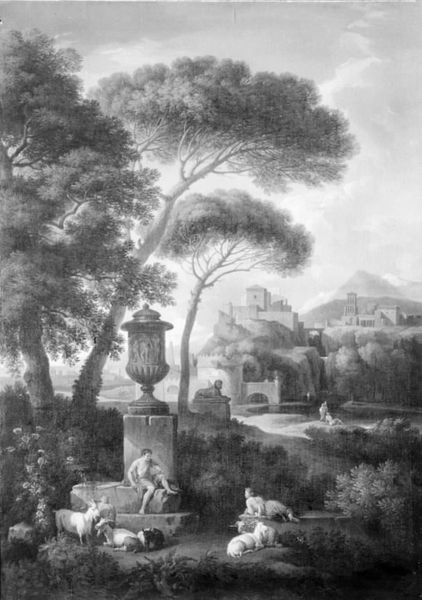
painting, oil-paint
#
baroque
#
dutch-golden-age
#
painting
#
oil-paint
#
landscape
#
figuration
#
oil painting
#
genre-painting
#
realism
Dimensions: 109 x 75 cm
Copyright: Public domain
Curator: Isaac van Ostade’s “Woman Selling Fruit by a Cottage,” created around 1645, presents a fascinating slice of Dutch Golden Age life rendered in oil on panel. What are your immediate thoughts? Editor: It's wonderfully detailed. The whole scene feels grounded, very earthy, even a little romantic in the everyday details. The worn brickwork, the figures milling about... there's a lived-in quality. Curator: Absolutely. Van Ostade excels at depicting the material reality of this scene – consider the textural details he includes in the worn clothing of the villagers or the distressed timber of the cottage; the visible means of production are almost protagonists here. The act of commerce is centered in daily lives, fruits displayed for sale, highlighting the tangible exchanges within this small community. Editor: And how that commerce unfolds in a very particular context. We are, after all, looking at a society grappling with increasing trade and nascent capitalist systems. I'm particularly drawn to how Van Ostade frames the composition. It seems he is actively defining the rural space within this historical narrative. Curator: Precisely. What looks like a humble genre painting offers insight into the networks sustaining Dutch society at the time. Even the application of oil paint allows van Ostade to convincingly simulate light filtering through leaves, evoking a very precise time and place, almost indexing a certain social structure based around cottage industries. Editor: I also think it's important to view this through the lens of art's institutional role during this period. Works like these solidified notions about Dutch identity and promoted ideas around productivity. Consider the placement of paintings like these within wealthy households or public collections. Curator: Right, and we can then also examine how artistic conventions shaped representations of labor. The clothing, the gestures, and the objects themselves reflect the specific codes and values that visually constructed "ordinary" Dutch life. The work, therefore, moves beyond just observation of genre; it presents carefully constructed materiality meant for consumption. Editor: Reflecting on this piece, it highlights the constant negotiations between aesthetics, societal norms, and power structures of the time. Curator: Indeed. Viewing “Woman Selling Fruit” reveals both the visible materiality and also the invisible hand guiding how we perceive art's function within history and our present.
Comments
No comments
Be the first to comment and join the conversation on the ultimate creative platform.
